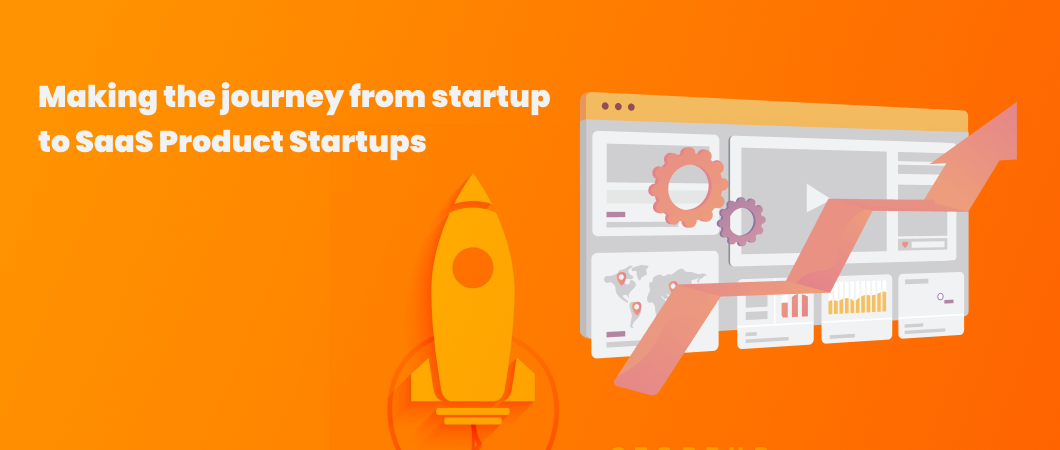For startups, transforming products into SaaS productsmight seem like a daunting task. Founders must don several hats, there’s always so much to do, and budgets are always tight.
Understanding how to begin the SaaS journey or what cloud capabilities to integrateinto the product strategy doesn’t come easy; it takes a team of skilled developers and an eternity to build, update and deploy a SaaS product – which invariably impacts time-to-market deadlines.
Let’s look at what makes this journey complicated and how to make it that bit easier.
The SaaS challenges for product startups
The SaaS model is becoming increasingly appealing to a wide range of startups, and for good reason. The global SaaS market is expected to grow by $ 99.99 billion between 2021-2025, progressing at a CAGR of over 11% during the forecast period. The agility, innovation, and operational efficiency that SaaS products offer are ideal to create a competitive advantage and open new opportunities for business growth.
Launching a digital health app? Or releasing your own smart analytics application? In today’s digital era, integrating or enabling cloud capabilities is a prerequisite. You need to have a robust cloud infrastructure that’s uniquely suited to your needs— and ideally without all the heavy lifting involved in researching, testing, and evaluating options.
Unfortunately, for product startups, this journey to the cloud is not easy. Despite the plethora of services and tools that are emerging, streamlining the SaaS process, and bringing big ideas to market quickly is a mammoth task. The most common SaaS challenges for product startups include:
- Lack of the right cloud knowledge and experience, making it difficult to craft a robust product designed for the SaaS business model
- Absence of a large pool of proficient cloud resources who have the skill and technical expertise to create SaaS-enabled products
- Limited funding and restricted budgets that make it difficult to hire experts or outsource SaaS capabilities
- A sporadic stream of revenue makes it difficult to keep the SaaS concept up and running and on track
Overcoming challenges with a robust SaaS journey framework
As the SaaS delivery model for offerings becomes increasingly appealing to product startups and given the impact SaaS can have on the business, there is immense enthusiasm for reaping the rewards. However, the move to SaaS represents a transformational paradigm shift. It requires startups to carefully examine all the moving parts of their business and then set out to define, build, and operate an as-a-service business.
Whether you want to build and scale a new SaaS product, optimize an existing SaaS solution, or transition to the SaaS business model from your traditional software delivery model, you need to create or embrace a robust SaaS journey framework and make the best use of an array of patterns and strategies.
A SaaS journey framework, like the one offered by AWS, can help you extend your startup’svision far beyond technology strategy. It can put greater emphasis on a model that allows even a fledgling startup to create an excellent customer experience.Let’s look at the 4 key elements of a robust SaaS journey framework:
- Ensure effective business planning:The first step you need to take to hop on the SaaS journey is effective business planning. This includes brainstorming ideas with your C-level executives, product, sales, marketing, technical, and operations executives together and painting a clear picture of your target market. You also need to evaluate the costs and challenges involved as well as understand the revenue you are likely to generate by transforming your product into a SaaS product.
- Build a strong SaaS product roadmap:The next step is to build a strong SaaS product roadmap. Get your teams together to deliberate and conceptualize how your customer experience should look and finalize what features should be part of your scope. This exercise will help you get a better idea of how your SaaS product will look and feel, how your users will use it, and how it will meet the needs of different markets.
- Develop a Minimum Viable Service: The third step entails the coming together of your C-suite and development executives to develop a Minimum Viable Service or MVS. The key elements of your offering that must be folded into this initial market foray will be decided by a strategic assessment of what the target customers need first (and most). This will allow you to get a good grip on your general business and product strategy while helping you set the scope and vision of an initial offering – so you can deliver maximum value to your users.
- Have a strong go-to-market strategy: The last and final step requires your sales, marketing, product, and finance teams to curate an appropriate go-to-market strategy. This involves expanding the MVS vision by keeping the vision and scope of the product, your target segments, and your operating model in mind. A strong strategy will go a long way in helping your SaaS product achieve long-term and sustainable growth.
The shift to a SaaS model demands a fundamental shift in strategic and operational mindset. For startups, this entails rethinking existing roles and responsibilities, defining a culture of SaaS, and introducing new policies and practices that are at par with industry best practices.
The shift to SaaS is not easy, but if you thoroughly prepare your organization and extend your product vision to the service model, you can make tremendous progress, and eventually achieve maximum SaaS value proposition.
Looking to build a robust SaaS journey framework? We can help! We can bring your SaaS product to life by ensuring you use the best cloud options out there, setting the right priorities, and building strategies based on your business domain, the competitive pressures you are facing, and the goals you aspire to achieve. That can set you up for the SaaS glory your startup deserves.



